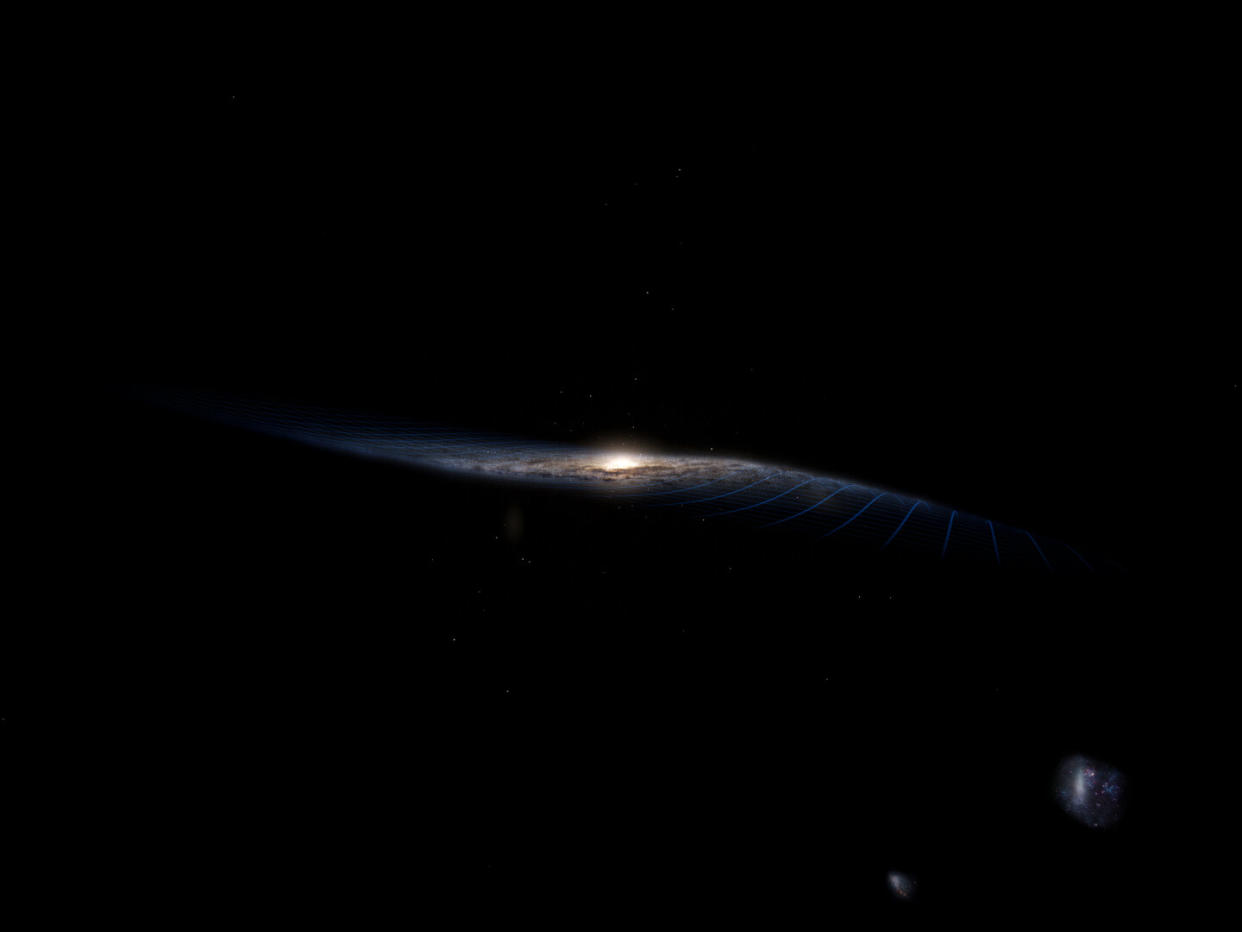Our galaxy is warped 'because of another galaxy crashing into it'

Astronomers think that the strange ‘warp’ in our galaxy, the Milky Way, could have been caused by a collision with another, smaller galaxy, which is sending ripples through ours.
A survey by the European Space Agency’s star-mapping satellite Gaia has offered a hint of what might be causing it, with a scan of a billion stars showing that the warp is changing.
The speed with which the warp is changing hints that it must be caused by something powerful, such as a collision with another galaxy.
Read more: Star hurled across our galaxy by new kind of black hole
The astronomers do not yet know which galaxy might be causing the ripple nor when the collision began.
One of the contenders is Sagittarius, a dwarf galaxy orbiting the Milky Way, which is believed to have burst through the Milky Way’s galactic disc several times in the past.
Astronomers think that Sagittarius will be gradually absorbed by the Milky Way, a process which is already underway.
Read more: Asteroid that wiped out dinosaurs ‘exploded with force of 10 billion atomic bombs’
“We measured the speed of the warp by comparing the data with our models. Based on the obtained velocity, the warp would complete one rotation around the centre of the Milky Way in 600 to 700 million years,” said Eloisa Poggio, of the Turin Astrophysical Observatory in Italy and lead author of the study published in Nature Astronomy.
“That’s much faster than what we expected based on predictions from other models, such as those looking at the effects of the non-spherical halo.”
As impressive as the warp and its precession appear on the galactic scale, the scientists reassure us that it has no noticeable effects on life on our planet.

“The Sun is at the distance of 26,000 light-years from the galactic centre where the amplitude of the warp is very small,” Eloisa said. “Our measurements were mostly dedicated to the outer parts of the galactic disc, out to 52,000 light-years from the galactic centre and beyond.”
Read more: Huge black hole at the centre of our galaxy suddenly emits mysterious glow
Gaia previously uncovered evidence of collisions between the Milky Way and other galaxies in the recent and distant past, which can still be observed in the motion patterns of large groups of stars billions of years after the events occurred.
“With Gaia, for the first time, we have a large amount of data on a vast amount stars, the motion of which is measured so precisely that we can try to understand the large scale motions of the galaxy and model its formation history,” says ESA’s Gaia deputy project scientist Jos de Bruijne. “This is something unique. This really is the Gaia revolution.”


